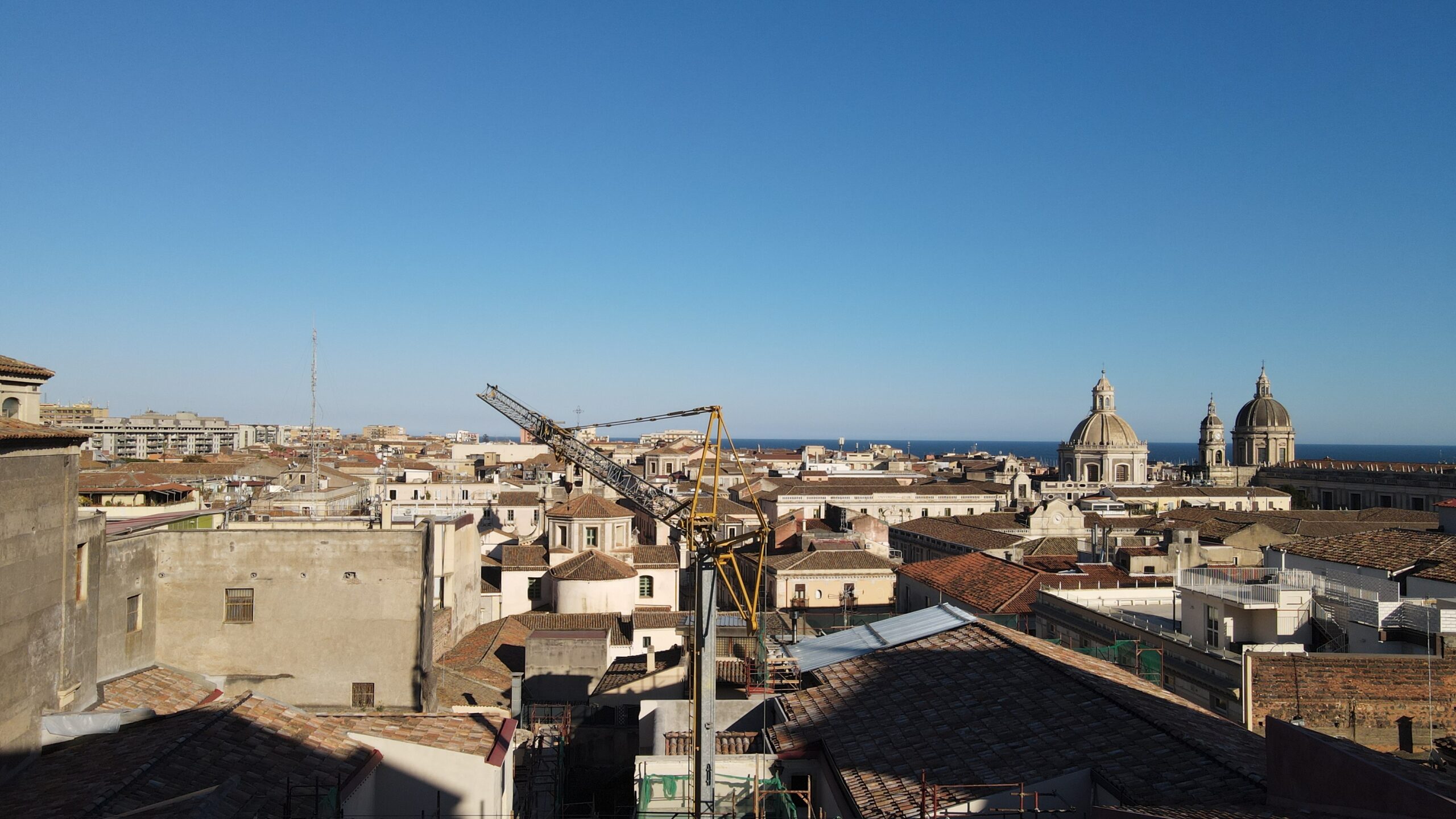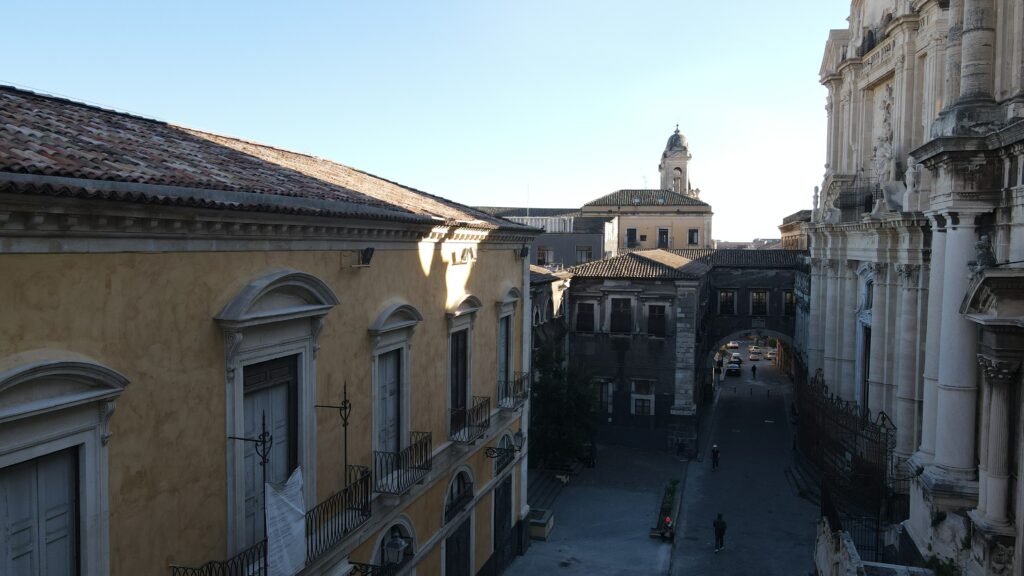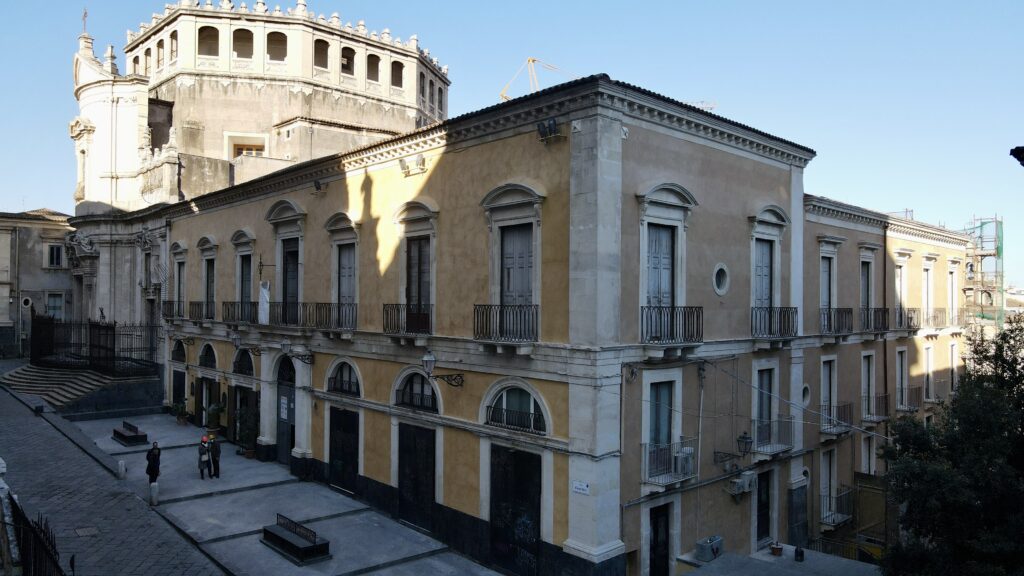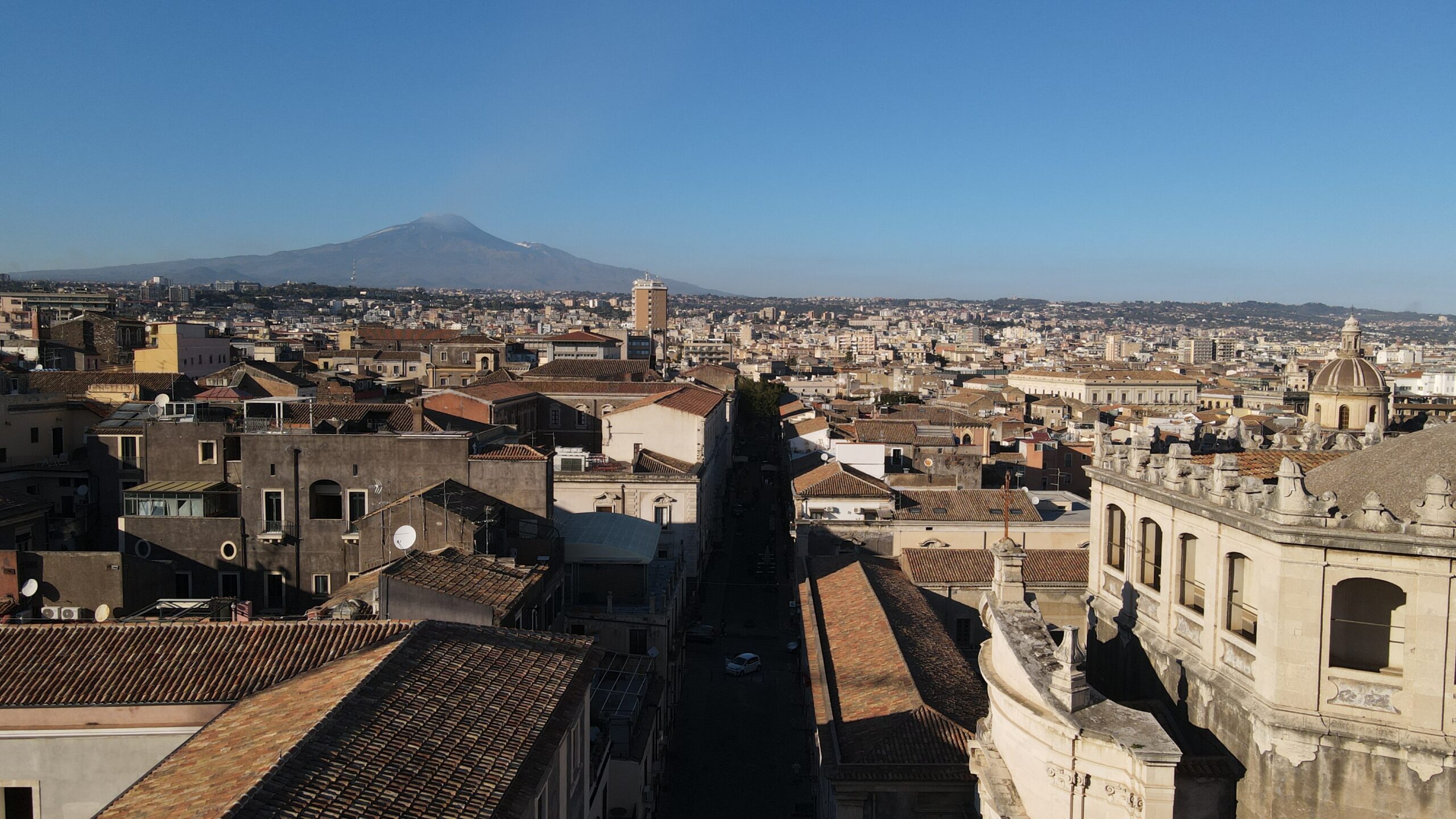To intervene on a site of great value, with a strong architectural identity, combining respect for its historical relevance with the implementation of innovative safety and energy efficiency measures: it is with this objective in mind that we tackled the restoration of an eighteenth-nineteenth century palace in Via Crociferi, one of the oldest streets in Catania’s old town, now a UNESCO world heritage site thanks to its Baroque buildings.
The building in question, on the corner of Via Alessi, had been mostly uninhabited for many years and had long been subject to trespassing. The prolonged lack of maintenance led to a situation of general decay, which had spread through the entire structure and required action on several fronts.
For this reason, we maximized our action by integrating various interventions within the 110% Superbonus and other state incentives, from energy requalification to the consolidation of the building’s structure, responding with tailor-made solutions even when presented with the numerous obstacles that became apparent only after the intervention commenced, these could not be detected by the preliminary surveys.

Structural and anti-seismic interventions
Without doubt, it was the intervention on the structures that had the greatest impact. As mentioned, serious damage had been caused mainly by trespassers. Therefore, on the basis of the structural project led by Engineer Sebastiano Caramagno, we first provided for the total reconstruction of the building’s roof covering and also of the wooden structure supporting it, which was irrecoverable by then, with the creation of roof curbs.
This intervention on the roof was also accompanied by a general and anti-seismic consolidation intervention, starting first of all with the walls, which were plated with fibreglass netting and structural plaster where significantly damaged. Based on the structural design, we also provided for the demolition of some steel and brick decks and floors, now seriously unsafe due to weather erosion, and their reconstruction, using a structural mortar with a very specific low weight. Lastly, it was planned to insert steel tie rods to reinforce the wall faces, originally built using the sack masonry technique.

The energy efficiency interventions
The structural intervention was developed in synergy with the energy efficiency interventions, the latter on a project by Studio Stancanelli Russo Associati s.r.l., with the collaboration of Engineer Melita Pennisi. Thus, while taking care of the roof, we also insulated it and changed most of the existing window and door frames, replacing them with wooden frames made of oak and douglas, with colours in-keeping with the historical context. In addition to these modernisation measures, designed to make the building more sustainable, we also added the use of thermo-plaster applied to the non-main façades (those not affected by the historical constraint) and the adaptation of the thermal systems, with the installation of heat pumps. Thanks to these interventions, the building’s energy efficiency was increased by two classes.

The interventions for the restoration of the façades
As already mentioned, what characterised this project was the respect for the historical memory of traditional building and restoration, between innovation and tradition. Under the supervision of the Cultural Heritage Commission, which suggested the techniques to be used, we proceeded with the restoration of both the stone and plaster of the facades on Via Crociferi and Via Alessi. For the new plaster, given the important historical value, we maintained the difference in colour between the main and secondary streets. It was in fact common practice at the time to use a more refined plaster, similar to stucco and highly worked, on the façade of the main street and instead ‘cocciopesto’, an unrefined plaster, on the secondary streets. We have maintained this characteristic, using a plaster with a final glaze on Via Crociferi and ‘cocciopesto’ for the other areas. Thanks to our restoration work, the building once again has two traditionally different colours, with two different but similar glazes to keep the logic of the period intact.





